When Lea Frederick started out in the aquatics industry, she didn’t enter the industry expecting that she would one day be the only woman in the world to attain accreditation as a member of the prestigious Society of Watershape Designers, by the Genesis Design Group.
In fact, Frederick didn’t start out designing swimming pools at all. It was only after her husband, with whom she owned a commercial swim and tennis club, teamed up with a business partner who needed someone to do design and sales that Frederick decided to consider designing pools.
Frederick’s background in engineering meant she had the necessary technical understanding to start designing beautiful pools. By leveraging those skills — along with her experience teaching lifeguarding for the Red Cross as well as kids’ swimming lessons — Frederick has been able to design and build stunning pools that clients love, enabling her to build a successful career as a business owner and Watershape Designer: she owns Vue Custom Pools and Vue Custom Design.
In order to achieve that success, however, Frederick first had to show her clients exactly what she could create for them. She knew how to build a great pool that would solve even the most challenging problems clients handed her — what she needed next was to find a way to show her clients exactly why her designs were right for them.
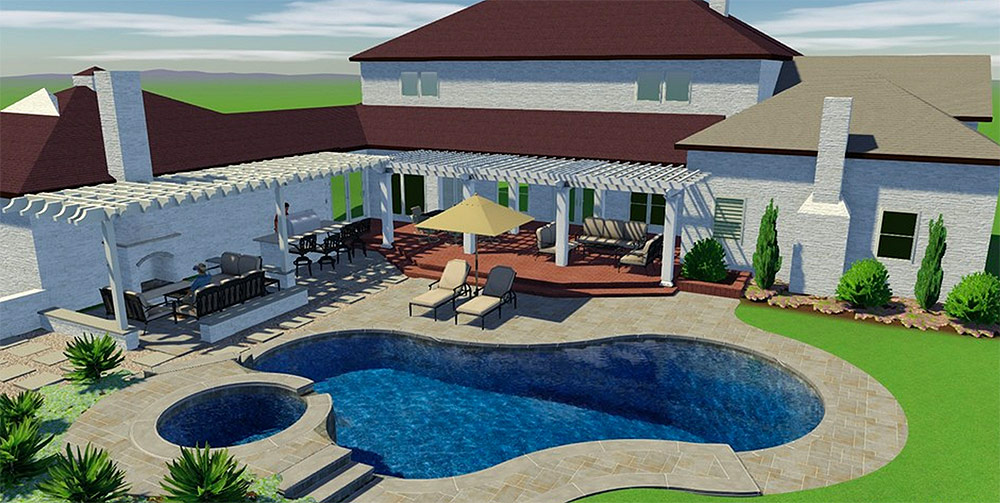
Conceptualizing Challenges in 3D
In 2009, Frederick learned about Pool Studio at a pool show — and, she says, turning to 3D design immediately helped her grow her business.
As soon as Frederick saw what she could create with Pool Studio, she realized that she could use 3D visualization not just to help her clients understand how she was going to solve their difficult terrain problems, but also to help them see the value in expanding their goals and planning a complete outdoor living space beyond the pool.
When she first started designing pools, Frederick found that clients often struggled to understand exactly how the pool would look in their yard:
"Even with an engineering background, it was difficult for me to explain elevations to my clients. For example, if we were looking at a backyard, I would say, 'you know, if you want your swimming pool there, you are going to be four feet above the ground over there. What are we going to do about that?' They had a hard time conceptualizing that.”
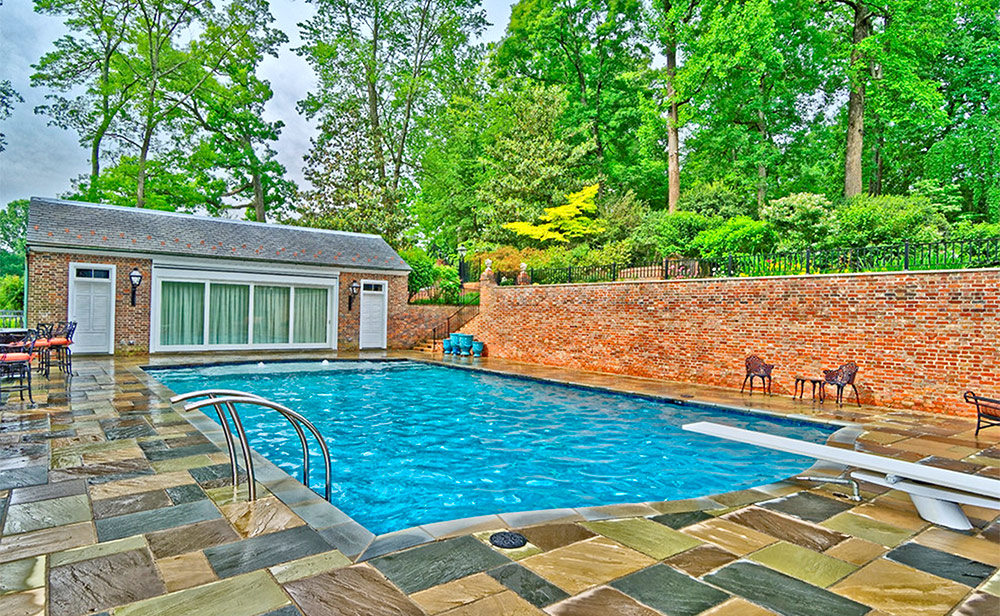
When Frederick discovered Pool Studio, she instantly saw the potential to offer her clients much more than just the swimming pools she had begun to design and sell for her husband's business partner:
"Just starting out, I was just doing swimming pools, so there was no other stuff. It was like, 'here's your pool and here's your yard and here's your house.'” Although clients responded well, she wanted to do more.
After she was introduced to Pool Studio, she saw that designing in 3D would make that possible:
“We wanted to do the whole outdoor living space. It completely made sense to do every bit of the project in 3D."
The reason for that? "It was just much easier for a customer to see it. Especially the ability to go from day to night, I think, is important. Just showing them what lighting can do, and showing them how cool it's going to look at night, because that's when they will be spending a lot of time in that space.”
Showing clients exactly how they would be able to enjoy their new pool became a winning strategy:
"It just seemed so much easier to show it than to explain it,” Frederick says, and “showing what their whole entire space is going to look like is one huge part” of what makes her clients choose her designs.
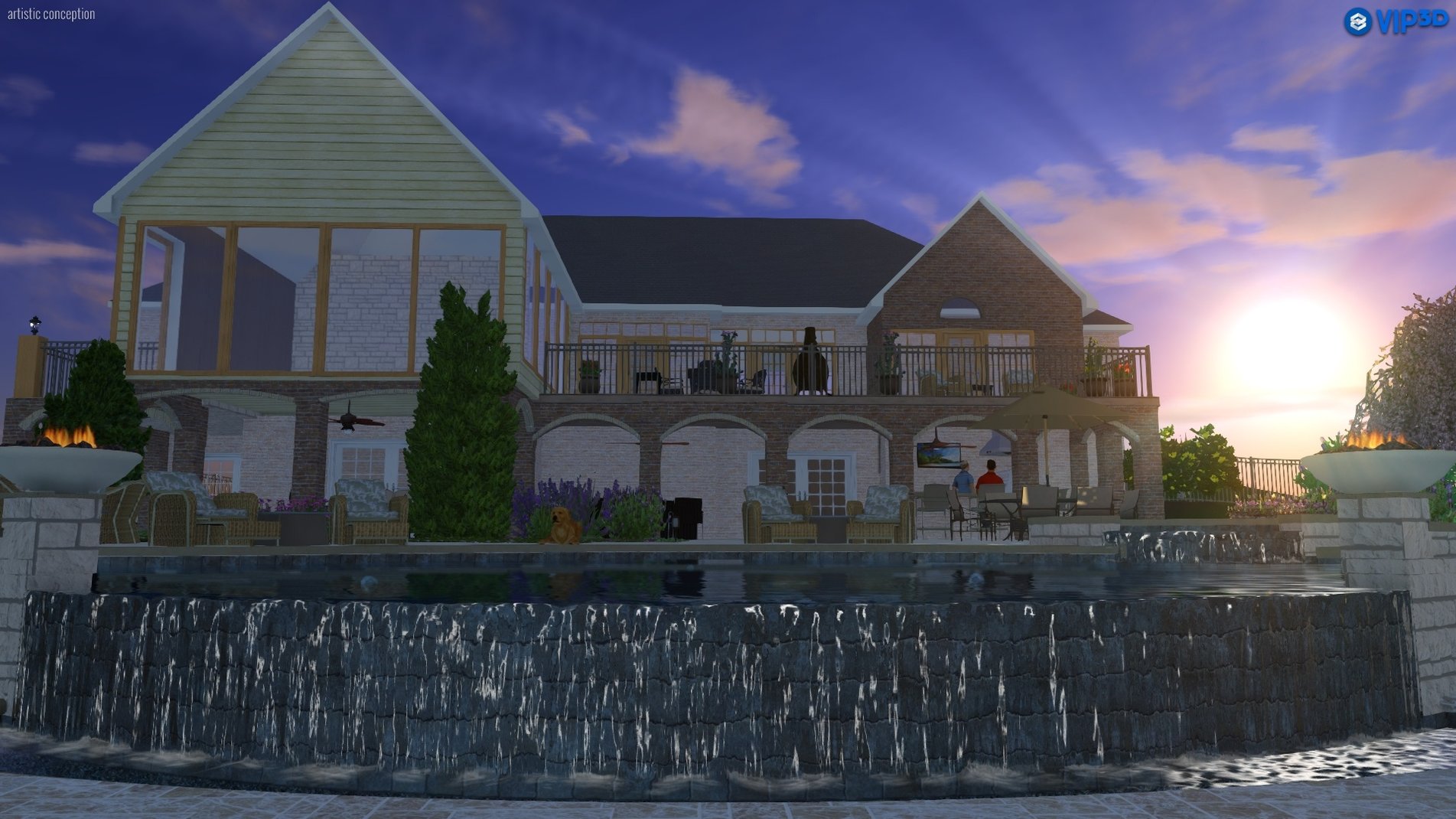
Creating the Wow Factor to Design Bigger Projects
For Frederick, one of the best benefits to designing with 3D software is that showing clients their outdoor living space in 3D makes it much easier for them to make a decision:
“As soon as they see their house and their backyard, you've pretty much got them. It makes it an easy sell.”
“People are always surprised when they find out my background is mechanical engineering,” Frederick says, recognizing that homeowners can sometimes be concerned that an engineer might take a very analytical approach.
Frederick's approach, when meeting with her clients, is to listen for what it is that they really want, so that she can design for them an outdoor living space that goes beyond what they thought possible: “What my husband says I do best is listen to the clients, respect their ideas, and make them even more excited about them.”
She does that by “incorporating [their ideas] into a great design, giving them options that work within their budget, and educating them about what is available in the market,” which, she says, “is huge in gaining their trust as a builder.”
When she begins a design, Frederick doesn’t just give her clients a pool. She creates an entire outdoor living space around that pool, and explains to her clients why it’s important to consider the entire yard from the start:
"Even if you think you might not want this now,” she tells her clients, "but you do like to grill outside, you might eventually want an outdoor kitchen. Let's design it in now, so when we add it in, it doesn't look like it's pieced together as separate projects."
In order to show clients how "projects can easily be done in phases to look seamless," Frederick takes the time to explain the differences between materials — for example, between pavers and stone or stamped concrete — and helps her clients see that planning the details in advance can help them achieve the results they want, even if they don't complete the entire project immediately.
"Having them think out of the box just made that project bigger inherently. It's really nice just to show them more than just a pool in their backyard.” That strategy means clients very often choose to build bigger projects than they initially imagined undertaking.
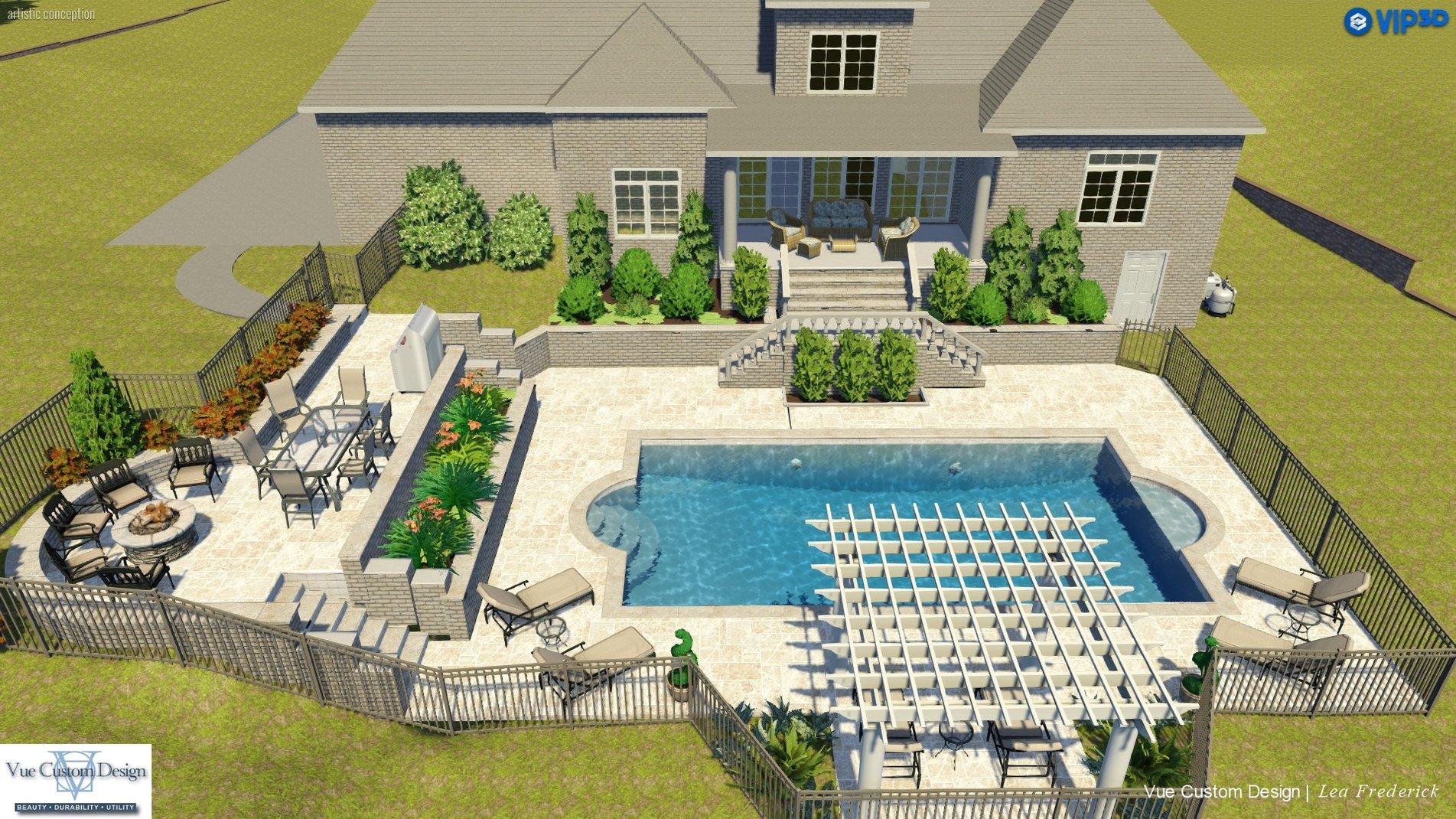 Looking Beyond the Pool to Personalize Projects
Looking Beyond the Pool to Personalize Projects
The layers of details that Frederick adds to her designs make those complete 3D projects especially compelling for her clients.
“We did a design for a guy who said, ‘I just want to sit in my pool and watch the sunset over the lake,’ and I said, ‘I can show you that.’”
When she first begins to discuss a plan with clients, she focuses on ways that she can design their outdoor space to address both what they need right now — and what they might want in the future.
That means incorporating an aspirational outdoor kitchen for a client who likes to grill, for example, or imagining new ways to incorporate the client’s kids and family dog into their space.
Because she designs in 3D, Frederick can use the software library to show clients how her design gives them what they want — and how enjoyable their space will be.
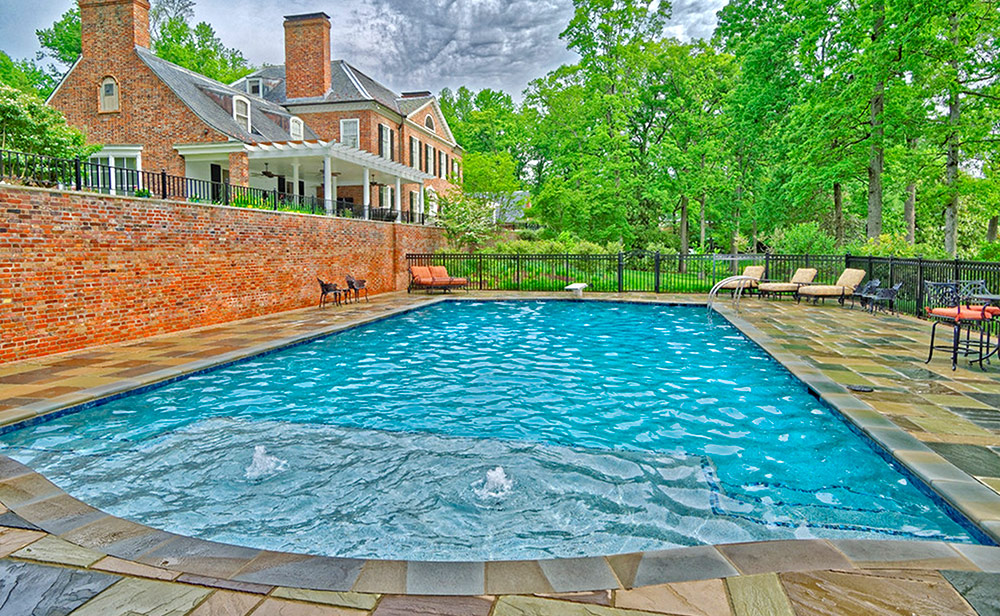
"I probably read this on your blog, but I've been using a lot more people in my 3D renderings so they can see spatially how much room they have [around] a spa or a fire pit, for example. Tell me how many people you see sitting around it, and we'll work from there."
For the client who wanted to watch the sunset from his pool, Frederick made use of the 3D library to show her client exactly what he would see when he lounged in the pool she would build for him — complete with a realistic 3D version of himself in the pool: “So I moved the sun, and he's sitting in his floatie with a drink in his hand, watching the sunset. He couldn't be happier!”
As Frederick sees it, “showing them what it is now and what it can be is the wow factor.”
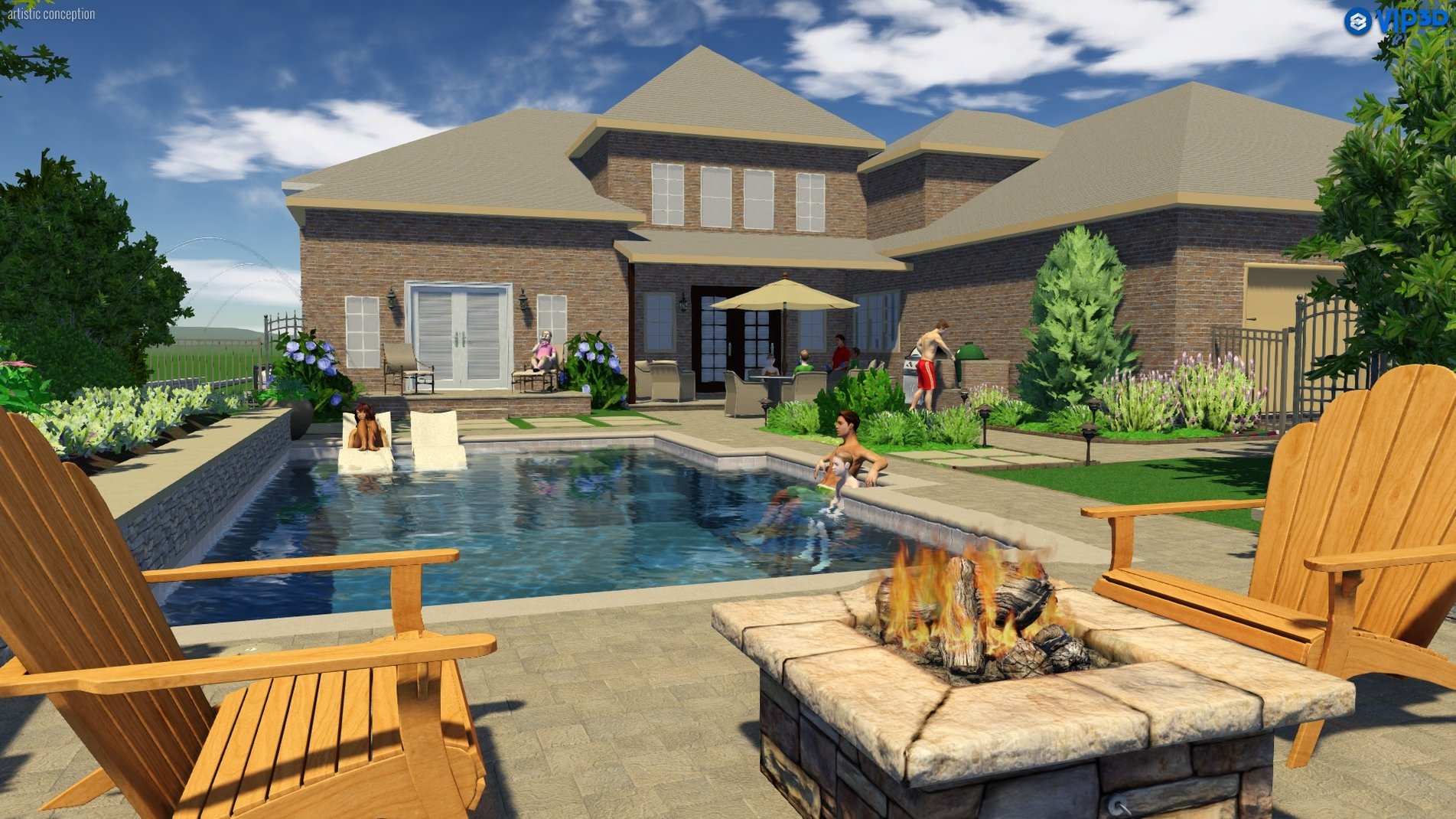
Inviting Clients to Join the Planning Process
As she began furthering her education as a designer, and taking Genesis 3 University classes, Frederick began experimenting with new ways to help clients feel more involved in the design process.
“Previously,” she says, "I would meet with the customers and build an idea book off of what they told me. I used Houzz. Then, after reviewing the idea book, we would discuss what they liked about it.”
From there, she would plan a design.
As she began to explore new strategies, Frederick found that encouraging clients to connect with a design meant reversing that process: “now, I do it the opposite way. I tell them how fun it is to build an idea book. Then I have them send me the pictures before we even meet.”
By reversing the process, Frederick helps her clients “[get] themselves into design mode. Looking at photographs is much different than looking at a sheet of paper,” and it means that Frederick can create successful designs even for clients who have yet to finish building their house:
"I encourage them to come into the process with a concept. It might be a 2D drawing or a plan that they've already paid for.” For clients who haven’t finished building their house, she says, "It helps me get a really good sense of their style. . . . If I go somewhere that's already established, I can get a sense of style. But if we're meeting offsite somewhere, we have to get the thought process going through their mind.”
From there, Frederick says, she can begin the conversation with the client about what they really want — and help them see the value in designing their project together in 3D:
"How do I encourage them to pay for 3D design? I ask them, are you happy with that plan? Is this what you want? Does this fit the needs for your family and how you see yourself using it? If it does, fine. If it doesn’t, or they kind of hesitate, I suggest that we see how this suits the needs of your family, not just what somebody put down on a piece of paper.”
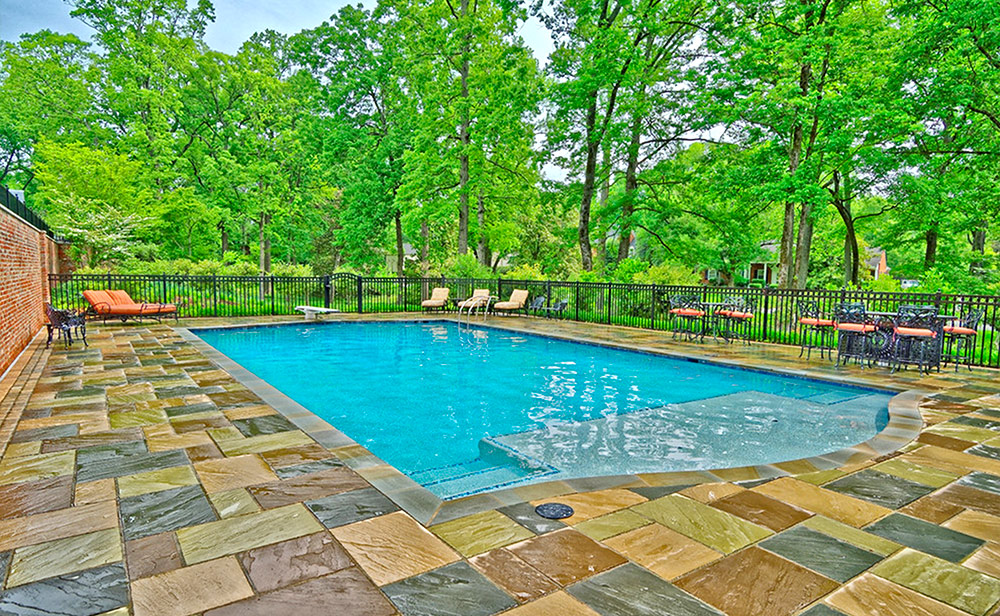 Delivering Client-Amazing Results
Delivering Client-Amazing Results
That process includes both discovering what the client likes and using 3D software to discuss details that clients find hard to conceptualize:
"There are things that they like in the photographs that I can pull out and represent in 3D that can't be hand drawn. It might even be something as simple as the color of the water. . . . I think, when you start to ask those types of questions, that's when it becomes clear that you have more a design concept then a build concept. To show them that in 3D in important.”
The complete projects that Frederick designs for her clients are often so detailed that she takes the time to help them understand exactly how the design-build process works:
"When I do the design agreement, I tell them that it's going take a little time to get it all in here,” Frederick explains. Then, in the follow-up meeting, she and the client sit down to discuss the “working phase” design: "That's where I really show them I did it this way because you said you like this, or I did it this way because you have a dog, or kids, so they understand the rationale behind the way I design things.”
By taking that extra step, Frederick helps her clients feel confident about choosing her finished design: "We still may move things around a little bit, maybe change the shape of the pool, but if you've gotten all that up front, and taken care of their needs, then you've pretty much nailed it."
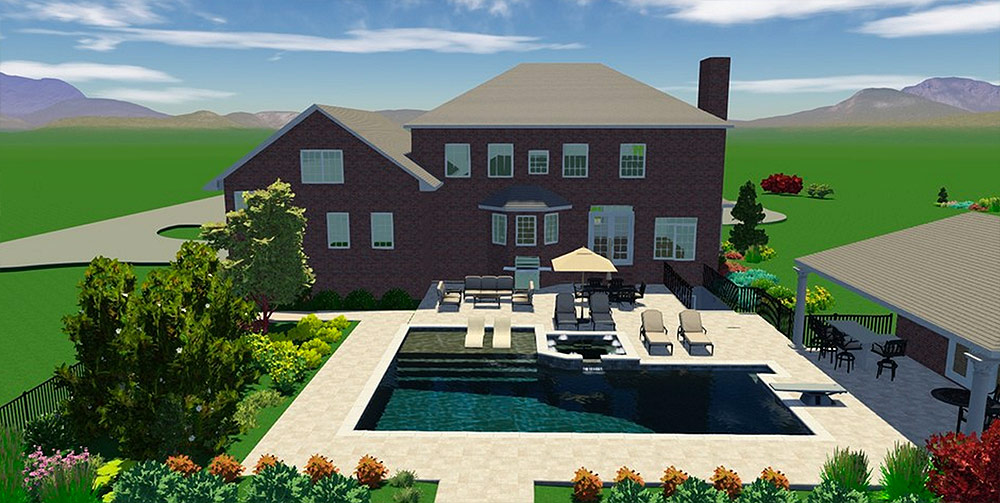 Solving Challenging Problems through 3D Design
Solving Challenging Problems through 3D Design
Often, those needs can be so challenging that Frederick gets called in to solve problems that her clients have not been able to find solutions to on their own:
"We do a lot of renovation work. Big renovations. Six-figure renovations. People with older pools want to bring them back to life and make them snazzy again,” Frederick says.
Frederick’s engineering background has meant that, from the start, she has focused on discovering innovative new ways to solve her clients’ most intriguing problems — both for clients renovating their properties and for clients building something new:
"We work with a lot of rural properties and so many people have these giant lots and it's all septic and [Environmental Health doesn't] let us get anywhere near that.”
In order to make sure her projects aren’t just beautiful but that they’re also going to work perfectly in her clients’ outdoor spaces, she uses Pool Studio to perfect every detail of her design.
That means, for example, that "when we go to get approval from Environmental Health, they know I know where the septic is and I'm not touching it.”
"I run into so many people that have gotten a design done from someone and they may just put a pool in and say, 'this is the future pool.' I look at the septic first because that design that they just paid for might go right out of the window. That's the biggest challenge we face both from a design and a build standpoint. It's heartbreaking to tell a customer that they paid for a plan that they can't do anything with.”
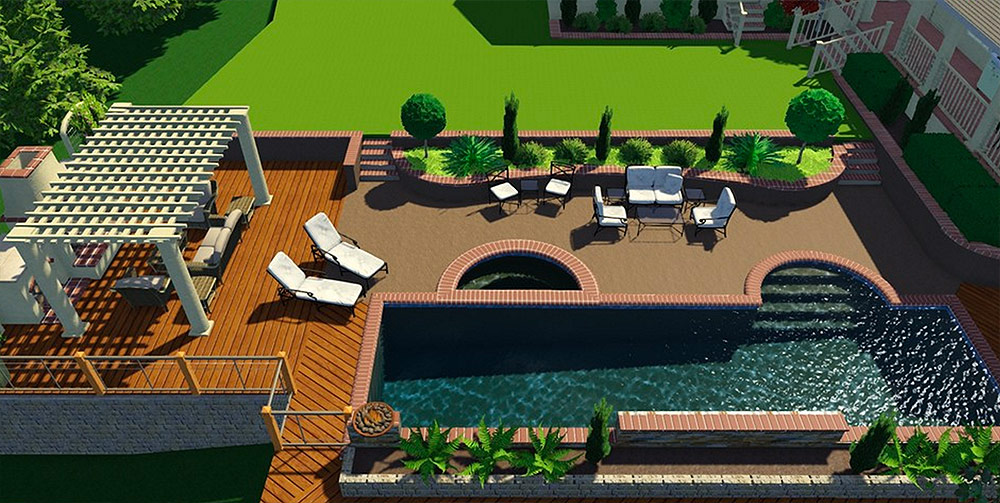
Perfecting the Details to Achieve Success
Frederick's intricately detailed and incredibly accurate designs, are two reasons why she is so pleased with what Pool Studio helps her to accomplish:
"Some of the more recent stuff like GIS, the fact that you can import those images, and the improvements to the construction pages has really made Pool Studio top notch. . . . The fact that I don't have to use AutoCAD for [construction] drawings is really important to me.”
Frederick encourages other designers to use Pool Studio, too, to create their own amazing designs: "I tell people this all the time,” she says. "I can't tell you how excited I get when I read what's new in an update on the blog. . . . When I see it, and I have the ability to use it, I just can't wait!”
“It just makes you a better builder. There's new stuff out there — why not get your head wrapped around it?”





 September 15, 2016
September 15, 2016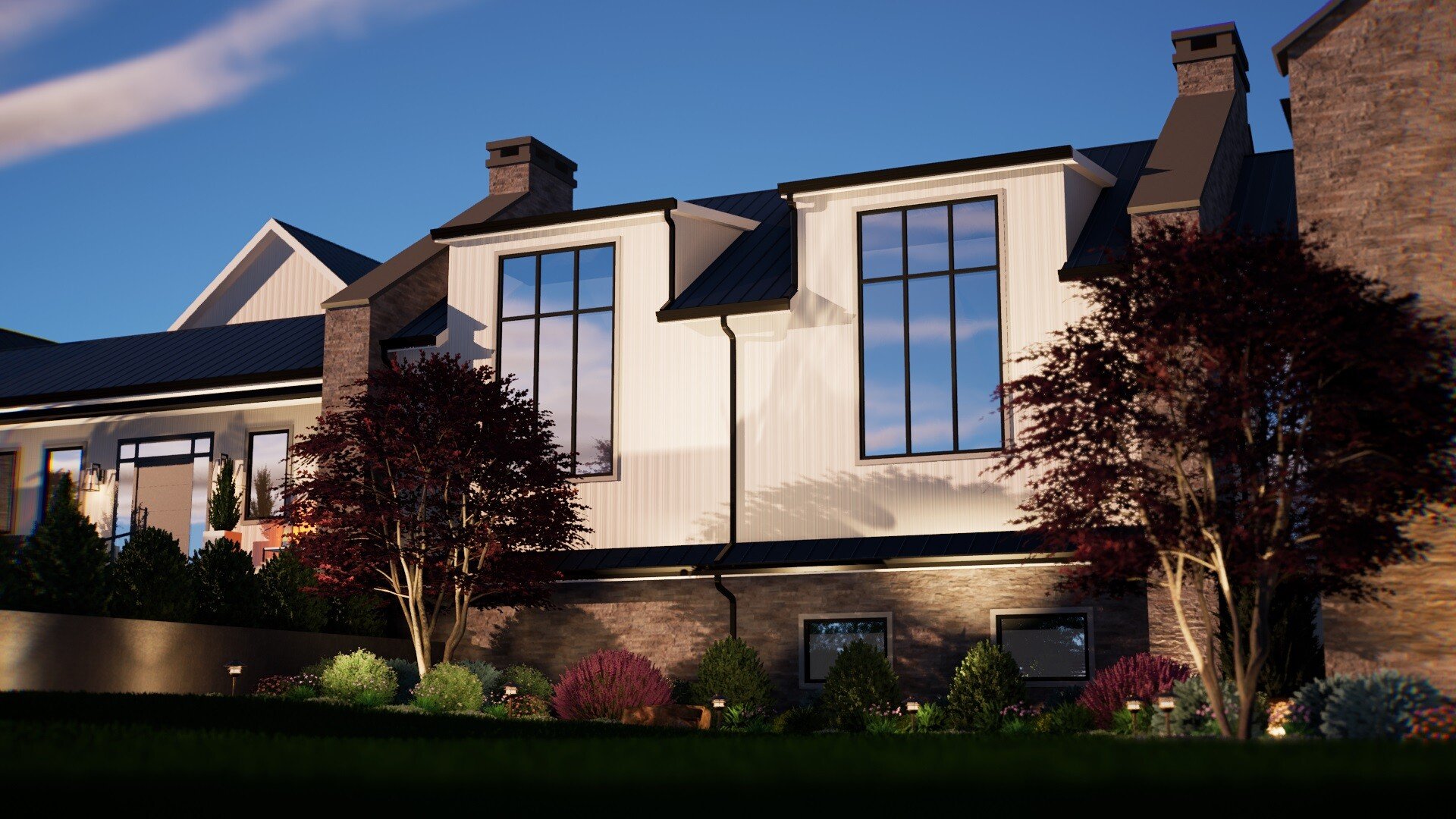



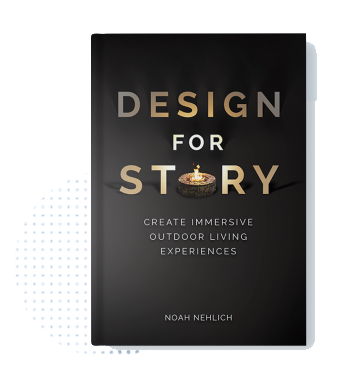


Comments